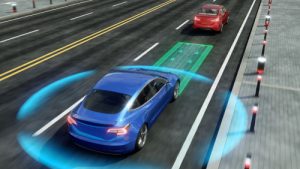 Federal traffic safety regulations have been proposed to make a major rule change for automakers: add automatic braking systems to new vehicles. This change would minimize car accidents and protect not only motorists, but pedestrians, who are at a growing risk of injury and death, especially at the mercy of high-seated SUVs.
Federal traffic safety regulations have been proposed to make a major rule change for automakers: add automatic braking systems to new vehicles. This change would minimize car accidents and protect not only motorists, but pedestrians, who are at a growing risk of injury and death, especially at the mercy of high-seated SUVs.
Statistics About Automatic Braking
The National Highway Traffic Safety Administration (NHTSA) reports that, in recent years, there have been an increasingly high number of fatalities when it comes to traffic accidents:
- Pedestrian fatalities have increased 53% in 10 years.
- 43,000 people died in motor vehicle crashes in 2021 (up 10.5%).
What difference could automatic braking systems make?
- Experts say as many as 360 lives could be saved every year.
- Crash injuries could be reduced by 24,000 annually.
- Deadly high-speed crashes could change to low-speed crashes that result in only property damage and minor injuries.
The NHTSA’s newest proposal for automakers shifts the commitment to install automatic emergency braking systems on passenger vehicles to a requirement, though this will not be an easy standard to meet. The proposal envisions a motorist avoiding a full collision at speeds up to 50mph, meaning the vehicle would have to stop without even touching the vehicle ahead of it when a driver fails to react, or at a speed of 62mph if the driver engages the brake but without enough force to avoid a collision.
Protecting Pedestrians with Automatic Braking
Because pedestrian fatalities have escalated in recent years, a spotlight has been shone on this demographic. Studies, research, and safety regulations have been implemented to keep people safe as they move about on foot. The automatic braking regulation would create an even safer environment.
Pedestrian accidents frequently end in death when the motor vehicle is traveling at 45mph or higher. The new rule would require that automatic braking cars stop to avoid pedestrians at speeds of up to 37mph.
If the NHTSA rule is adopted, almost all light vehicles in the United States would be required to have automatic emergency braking technology three years after the publication of the final rule. The rule also includes a provision that the technology works in both daylight and nighttime hours.
Pedestrians, not motorists, are the most vulnerable people on the roads. If a driver doesn’t take action in time or at all, the automatic braking system can prevent a collision entirely or, at the very least, reduce the severity of the accident.
The Automaker Response to Automatic Braking Systems
What do automakers think of this call to action? The Alliance for Automotive Innovation represents several companies and released a statement that says, “automakers have already developed and deployed automatic emergency braking (AEB) safety technology to help detect imminent vehicle collisions, warn the driver, and automatically apply the brakes.” The alliance calls AEB a “breakthrough safety technology that uses radar, cameras, and lasers to prevent crashes and save lives.” The goal is to install the AEB in almost all new vehicles by 2025.
Did You Lose a Loved One in a Pedestrian Accident?
What could an automatic braking system have done for your family? Could the earlier implementation of this technology have saved someone you love from a fatal pedestrian accident? Contact the Michigan personal injury attorneys at Thurswell Law to discuss your case and find out how you can get compensation. Schedule a consultation by calling (248) 354-2222 today. We do not charge any fees until we win.







